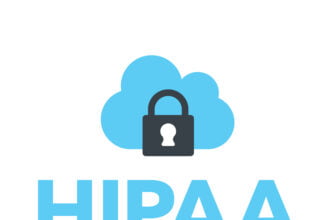Modern data is an increasingly overwhelming field, with new information being created and absorbed by businesses every second of the day. Instead of drawing in the sheer speed of production that we’re encountering, many businesses have moved into effective data management strategies. Of all of those tactics, storing structured data in databases is by far one of the most effective.
However, if a business doesn’t manage its databases efficiently, they become tedious to manage and unproductive to work with. That’s where database compliance comes in, ensuring that all the information you need to access is only a click away.
If you’re looking for faster, securer, and databases that readily produce the information you’re looking for, these strategies are for you. We’ll touch on the following database compliance methods:
- Developer Compliance Frameworks and Education
- Clearly Acknowledge the Data You Collect
- Have a Breach Recovery and Management Strategy
- Personal Data Should Have a Protection Strategy
Developer Compliance Frameworks and Education
As your company grows, the amount of data that you’re going to be handling will equally increase. Yet, another factor that people seem to overlook is that the number of data architects you employ will also begin to rise alongside other areas of growth. While new employees in this field are wonderful for ensuring all your data processes are up to scratch, onboarding them should have a level of precaution in it.
When onboarding a new employee, you cannot expect them to understand your company’s form of database compliance right from the beginning. While there are a number of key database compliance regulations that everyone will follow, like GDPR and privacy laws, your business may do things a little differently.
Beyond just aligning with good database practices, every business organizes and interacts with compliance differently. In your onboarding process, you should have documentation that clearly outlines how new developers are expected to interact with, respond to, and detect data events. Without this in place, your team will be scrambled whenever a breach or crisis event occurs.
Always have education in place to ensure everyone is on the same page.
Clearly Acknowledge the Data You Collect
Privacy notices are vital when dealing with any customer data. If someone doesn’t agree to have their data collected, you’re not able to do so without seriously setting your business up for a lawsuit. Creating a privacy policy should be one of the first steps you take in order to ensure all of your databases are compliant with regulations.
Of course, if you don’t have any privacy notice, then all the data you collect and store in a database will cause difficulties for you in the future. It is mandatory to understand what data you collect, how you use it, where you’re storing it, and how long you keep it. Without the answers to these questions, you’re unable to craft an effective privacy notice and share it with your customers.
Most of the time, customers won’t even read this notice. Unfortunately, that doesn’t really matter on your end. You must always write and distribute a detailed privacy policy to customers.
Have a Breach Recovery and Management Strategy
No matter how effective your database security is or how advanced the level of cybersecurity you have, there is going to be a time when you’re facing a data breach event or scare. The difference between a company that is compliant in these disaster scenarios and those that have effective response criteria in place.
Database compliance goes beyond just holding data. It also requires that customers that have data exposed in a breach are notified promptly, as decreed by the GDPR. You should spend time designing a response framework that your business will follow. There are two main areas to work on here:
- Internal Response – Ensure that your data team knows what to do, which backups to draw from, and which data they must protect in the event of a crisis. You should not waste time discussing what should be done, with a pre-outlined response format that all engineers know, helping you get the upper hand during a disaster event.
- External Response – You need to design a communications system that will notify everyone involved in a breach. Pick the medium of communication, the messaging you use, and the extent of information that you share with them.
With this in place, you’ll be in a much better position in the event of a data breach.
Personal Data Should Have a Protection Strategy
Our final tip for database compliance is one that’s often overlooked, but one that is vital to the long-term success of your data management. When you deal with personal or private data, you must treat it with an additional level of caution.
At the very least, you should anonymize any sensitive data that you deal with. There are a number of ways you can do this without corrupting the functionality of the data itself. For example, you could use tokenization or hashing to mask data on a surface level.
That way, if you’re ever in a data breach event, your customers are protected. Not only does that keep your business legally safe, but it also ensures that your customers will be able to put their faith in you no matter what.
Final Thoughts
Databases are a wonderful tool that allows businesses to seize the true potential of all the data they collect. Without them, it’s nearly impossible to draw meaning and insight from hoards of customer information. However, in order to use them freely, you need to make sure that your database compliance is up to scratch.
The strategies that we’ve outlined in this article will point you in the right direction, ensuring you have all the documentation and methods in place to set yourself up for success. Follow these strategies, and you’ll have everything you need to start collecting and using customer data at scale.
From there, business intelligence and insight will become a breeze.









